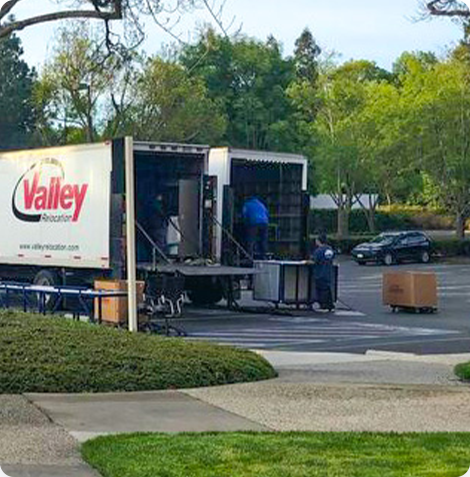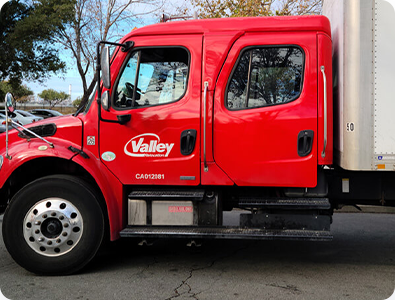In the fast-paced realm of modern business, the art of relocation has evolved into a strategic imperative for companies navigating a landscape of constant change. Whether spurred by expansion, consolidation, or the pursuit of heightened efficiency, commercial relocations stand as pivotal moments demanding meticulous planning and adherence to industry standards. As organizations strive to thrive amidst the ebb and flow of market dynamics, the success of these transitions hinges on a delicate balance—balancing the imperative to adapt with the need for a seamless and disruption-free shift.
Welcome to our blog, where we embark on a journey to explore the nuances of commercial relocations and, more importantly, delve into the indispensable role that industry standards play in ensuring a smooth and successful transition. The blog aims to unravel the complexities that businesses face when undertaking such transformative moves.
Before we dive into the intricacies of industry standards, it’s crucial to understand the evolving nature of commercial relocation in the context of today’s business landscape. Globalization, technological advancements, and market shifts have accelerated the pace at which companies must adapt. Consequently, the strategic necessity of commercial moves has grown, making the seamless orchestration of these transitions a hallmark of successful, forward-thinking organizations.
Keep reading to explore more about commercial relocations!
Planning Phase: Navigating the Path to Seamless Relocation
The planning phase of a commercial relocation is akin to setting the foundation for a complex structure; it requires careful consideration, strategic decision-making, and a keen eye for detail. In this crucial initial stage, businesses must address key aspects that lay the groundwork for a successful transition. Let’s delve into the intricacies of the planning phase, breaking down its components and highlighting the critical considerations that contribute to its success.
Assessing the Need for Relocation
Expansion or Downsizing
The decision to relocate often stems from a strategic evaluation of a company’s growth trajectory or the need to optimize resources. For businesses experiencing growth, expansion may be the driving force behind the move, necessitating a larger space to accommodate increased operations. Conversely, organizations undergoing downsizing may be seeking cost efficiencies and a more compact workspace. This critical assessment forms the bedrock of the relocation strategy, shaping subsequent decisions and ensuring alignment with broader organizational goals.
Facility Requirements
Understanding the specific facility requirements is paramount in the planning phase. This involves a meticulous analysis of the spatial needs, technical specifications, and infrastructure demands of the new location. From office layouts to specialized facilities, this assessment ensures that the chosen space not only accommodates the current needs of the organization but also provides room for future scalability. A comprehensive understanding of facility requirements serves as a guiding principle for property selection and subsequent logistical planning.
Budgeting and Cost Estimation
Creating a Comprehensive Budget
Financial considerations are at the forefront of any successful commercial relocation. Creating a comprehensive budget involves a thorough examination of all potential costs associated with the move. This includes but is not limited to leasing expenses, transportation costs, technology infrastructure upgrades, and employee relocation support. A meticulously crafted budget serves as a financial roadmap, providing clarity on allocation of resources and preventing unforeseen financial hurdles during the relocation process.
Identifying Potential Costs
To create an accurate budget, it is essential to identify and quantify potential costs associated with every facet of the relocation. These may include leasing or purchasing costs for the new space, expenses related to employee relocation, technology upgrades, and any unforeseen contingencies. An in-depth analysis of potential costs ensures that the budget remains realistic and comprehensive, guarding against unexpected financial strains as the relocation progresses.
Selecting the Right Location
Proximity to Clients and Suppliers
The strategic choice of location is pivotal to the success of a commercial relocation. Proximity to clients and suppliers can significantly impact operational efficiency and customer satisfaction. A location that optimizes accessibility for both clients and suppliers fosters stronger relationships and minimizes logistical challenges. Assessing the geographic implications of the relocation ensures that the chosen location aligns with the organization’s broader business strategy and enhances overall connectivity.
Accessibility and Transportation
The accessibility of the chosen location and its transportation infrastructure play a crucial role in the day-to-day operations of a business. Evaluating transportation links, traffic patterns, and overall accessibility for employees is essential. This consideration extends beyond the immediate relocation phase, influencing long-term logistical efficiency. Selecting a location with robust transportation infrastructure contributes to streamlined operations, reduced downtime, and enhanced overall productivity.
Compliance and Legal Considerations: Navigating the Regulatory Landscape
Embarking on a commercial relocation journey demands not only strategic planning but also meticulous attention to compliance and legal considerations. The complexities of regulatory frameworks can pose significant challenges, making it imperative for businesses to navigate this terrain with a keen understanding of the legal landscape.
Zoning and Permitting
Understanding Local Regulations
The first step in navigating the regulatory landscape is a comprehensive understanding of local zoning regulations. Zoning laws vary significantly from one jurisdiction to another, impacting how properties can be used and modified. As businesses plan their relocation, a thorough analysis of zoning regulations is crucial to determine if the intended use of the new space aligns with local guidelines. This understanding not only prevents potential legal conflicts but also informs decisions about the suitability of a location for the intended business activities.
Securing Necessary Permits:
Once the zoning requirements are understood, the next critical step is securing the necessary permits. These permits may encompass a range of considerations, including land use permits, building permits, and occupancy permits. Each permit serves as a legal authorization for specific aspects of the relocation process. Securing these permits in a timely and compliant manner is essential to avoid delays and legal complications during the move. Businesses must establish a clear roadmap for permit acquisition, factoring in the lead times required by local authorities.
Environmental Compliance
Addressing Environmental Impact
In an era of heightened environmental awareness, businesses are increasingly held accountable for the ecological impact of their operations. A comprehensive commercial relocation strategy must include an assessment of the environmental impact associated with the move. This involves evaluating factors such as waste management, air and water quality, and potential disruptions to local ecosystems. Addressing the environmental impact early in the planning phase allows businesses to implement mitigation measures and demonstrates a commitment to sustainable business practices.
Ensuring Adherence to Regulations
Beyond assessing impact, businesses must ensure strict adherence to environmental regulations. Local, state, and federal laws govern various aspects of environmental compliance, including waste disposal, hazardous material handling, and protection of natural resources. Establishing protocols to meet or exceed these regulations is not only a legal requirement but also a demonstration of corporate responsibility. Failing to comply with environmental regulations can result in severe legal consequences and damage to a company’s reputation. Thus, a robust environmental compliance strategy is integral to the success of a commercial relocation.
Communication and Stakeholder Management: Orchestrating a Symphony of Collaboration

A successful commercial relocation is not merely a physical transition; it is a complex dance of communication and stakeholder management. As businesses navigate the intricate web of internal and external relationships, effective communication becomes the linchpin for a seamless transition. In this section, we explore the vital components of Communication and Stakeholder Management—both internally and externally—highlighting strategies to foster engagement, manage expectations, and uphold a positive public image during the relocation process.
Internal Communication
Employee Engagement
Central to the success of any relocation is the engagement of the workforce. Employees are the heartbeat of an organization, and their buy-in to the relocation process is pivotal. Open and transparent communication is key to engaging employees at all levels. Establishing clear lines of communication, conducting town hall meetings, and providing regular updates on the relocation timeline and milestones foster a sense of involvement. In addition, addressing concerns and providing avenues for feedback ensures that the workforce feels heard and valued, mitigating potential resistance to change.
Managing Expectations
Relocations often bring about a sense of uncertainty among employees. Managing expectations is crucial to alleviating concerns and maintaining morale. Clearly communicating the reasons behind the move, detailing the benefits for both the organization and the employees, and offering support for any challenges that may arise demonstrate a commitment to transparency. By proactively managing expectations, businesses can cultivate a positive atmosphere, easing the transition for employees and minimizing disruptions to productivity.
External Communication
Informing Clients and Partners
Beyond the internal realm, external stakeholders such as clients and partners are integral to the success of a business. Proactive communication with these entities is paramount to maintaining trust and minimizing any potential disruptions to ongoing collaborations. Providing advance notice of the relocation, along with clear information on how services or partnerships will be affected, establishes a foundation of transparency. Regular updates throughout the relocation process demonstrate reliability and commitment to maintaining strong external relationships.
Public Relations Strategy
A well-crafted public relations (PR) strategy serves as the external face of the relocation, shaping the narrative for the broader community. Leveraging various communication channels, including press releases, social media, and company websites, allows businesses to share their relocation story on their own terms. Highlighting the positive aspects of the move, such as increased efficiency, expanded services, or enhanced sustainability practices, contributes to a positive public image. Addressing any potential challenges with candor and solutions-oriented messaging further strengthens the organization’s reputation.
Post-Move Evaluation and Optimization: Shaping a Future of Efficiency

The completion of a commercial relocation marks not just the physical transition but the beginning of a new chapter for the organization. The post-move phase is a critical juncture that necessitates a meticulous evaluation of the transition’s success and a strategic focus on optimizing processes for sustained efficiency. In this section, we explore the key components of Post-Move Evaluation and Optimization, unraveling the process of assessing the transition and addressing challenges to drive continuous improvement.
Assessing the Transition
Gathering Feedback from Employees
Employees are the frontline witnesses to the impact of the relocation on day-to-day operations. Collecting feedback from the workforce provides invaluable insights into the human experience of the transition. Conducting surveys, holding feedback sessions, or establishing a dedicated communication channel enables employees to share their observations, concerns, and suggestions. This qualitative data contributes to a holistic understanding of the relocation’s impact on the organizational culture, morale, and overall employee experience.
Analyzing the Impact on Operations:
Beyond employee feedback, a quantitative analysis of the relocation’s impact on operations is essential. Key performance indicators (KPIs) relevant to different departments should be scrutinized to identify changes in productivity, efficiency, and client interactions. Metrics such as downtime, order fulfillment times, and customer satisfaction scores offer tangible data points for evaluation. By combining qualitative employee feedback with quantitative performance metrics, businesses gain a comprehensive understanding of the transition’s impact on operational excellence.
Addressing Challenges and Improving Processes
Identifying and Resolving Issues
The post-move evaluation phase is an opportune time to identify and address any challenges that may have arisen during the relocation. Analyzing employee feedback and operational data helps pinpoint specific issues, whether they are related to communication gaps, logistical hiccups, or unforeseen disruptions. Establishing a cross-functional task force to tackle identified challenges ensures a collaborative and targeted approach to issue resolution. By addressing challenges promptly, businesses mitigate potential long-term impacts on productivity and morale.
Implementing Continuous Improvement Strategies
Post-move evaluation is not solely about troubleshooting; it is a springboard for continuous improvement. Organizations should leverage the insights gained from the assessment phase to refine and optimize processes. Implementing continuous improvement strategies involves adapting workflows based on lessons learned, updating relocation protocols, and investing in employee training where necessary. By fostering a culture of continuous improvement, businesses position themselves to not only navigate future relocations more smoothly but also enhance overall operational efficiency.
Minimizing Downtime

Minimizing downtime during the IT transition is a primary objective for businesses undergoing relocation. A well-defined strategy involves careful coordination between the IT team, moving company, and other stakeholders. This may include staggered relocation of equipment, temporary redundancy solutions, or conducting the move over weekends or non-peak hours to reduce operational disruptions. Communication with employees about potential downtime and providing alternative workflows, when applicable, contributes to a smoother transition without compromising productivity.
Hire Valley Relocation for the Job!
Are you trying to find a partner for one of the best and easiest commercial relocation process? If you’re in California, you can easily get in touch with Valley Relocation. We offer a range of different kind of commercial moving services that include warehouse and storage services, facility services, and a lot more.
You can get in touch with us today for more information or a free site survey.






